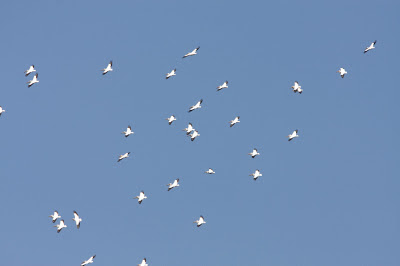At first we think the coast is going to be smothered in fog. As we near the coast big splats from fog drenched branches are hitting our windshield. Patches of fog hang about. Anything cool is welcome. July has been running way hotter than normal.
By the time we reach Shell Island at noon, the fog has burned off. A cool wind blows, the tide is just turning --- delicious! I zip myself into my lined wind-breaker. It is a temptation to let myself get chilled to my very gizzard just to erase all memories of sweaty hot.
A flat of sand stretches in front of the little island; on it are a mix of elephant seals, California sea lions, Steller’s and harbor seals. In the distance a few murres fly low over choppy waves. At least ten pelagic cormorant nests cling to Shell Island’s steep cliff wall. Most are full of half grown youngsters. Young gulls up there too. The bird guano on Shell Island looks like white frosting dribbled on a bunt cake.
Next we stop at Sunset Bay. Off in the distance is a little island covered with a sparse cap of dead trees. I remember when it was a lush grove of Sitka spruce -- but then double-crested cormorants set up housekeeping. Their colony is a busy place. Years of cormorant guano soon killed the trees. Now some of the trees are down and most of the branches on the remaining ones have snapped off. Enough branches remain for about 100 nests, fewer than in years past. It won’t be many more years and the cormorants will need to move to a new location.
I don’t see a lot of flying to and from the colony. It is mid day. Perhaps the young are well fed for now. I pick the fullest tree to sketch. It has 24 nests, but I only sketch 14. Most youngsters are nearly full grown -- trying their wings, hopping from nest to nearby branch and back again. I’m sketching from the car. I’ve got 20-60 power spotting scope mounted on the window -- far better than my binoculars.
When an adult finally flies in I watch carefully. Its nest has four large young. Three seem content, probably have full bellies already. The fourth begs immediately. He stretches his long, scrawny neck up, nibbling at the corners of the adult’s mouth, first one side and then the other. It is the same motion used by coyote and wolf pups when they pester at the corner of an adult’s mouth, triggering the adult to regurgitate meat. Much of the meat these carnivores bring back to the den is brought back in the adult’s belly. I’ve seen the alpha male of the Druid wolf pack so stuffed he looked ready to pop. Our cormorant has brought back a belly full of fish for its nestlings.
Getting the adult cormorant to regurgitate takes longer than I expect. For about two minutes the chick continues nibbling at the corners of the parent’s mouth. Finally the adult gulps a little and bends down towards the chick.
The chicks head half disappears inside the adult’s open throat. Lots of gulping by both.
Once free, the adult isn’t left in peace for more than a moment. More begging. This time it doesn’t take quite as long for the adult to regurgitate. Afterwards a different sibling reaches out and starts the nibbling process. Soon he, too, is gulping down food. I can’t track if each chick gets a meal, or just the first two -- too far away to tell for sure. I can see the adult regurgitates five times before leaving.




















